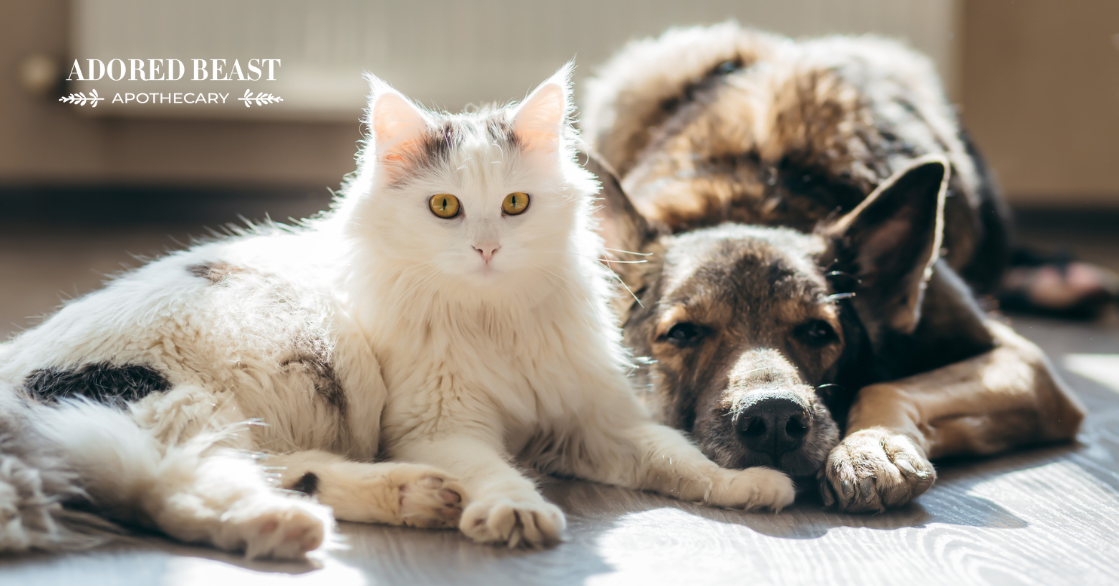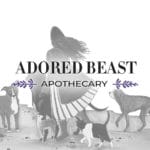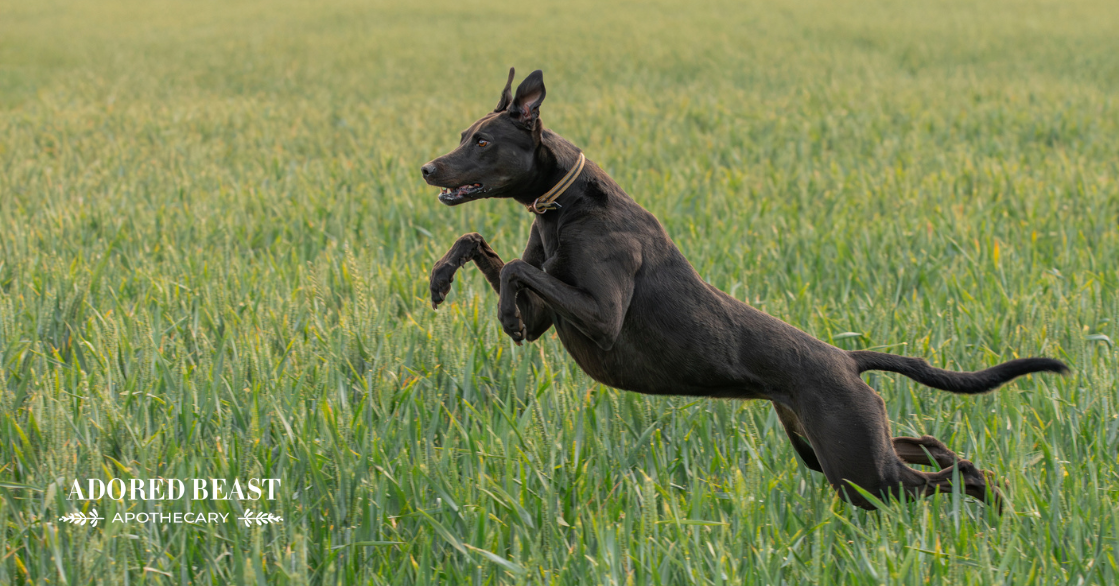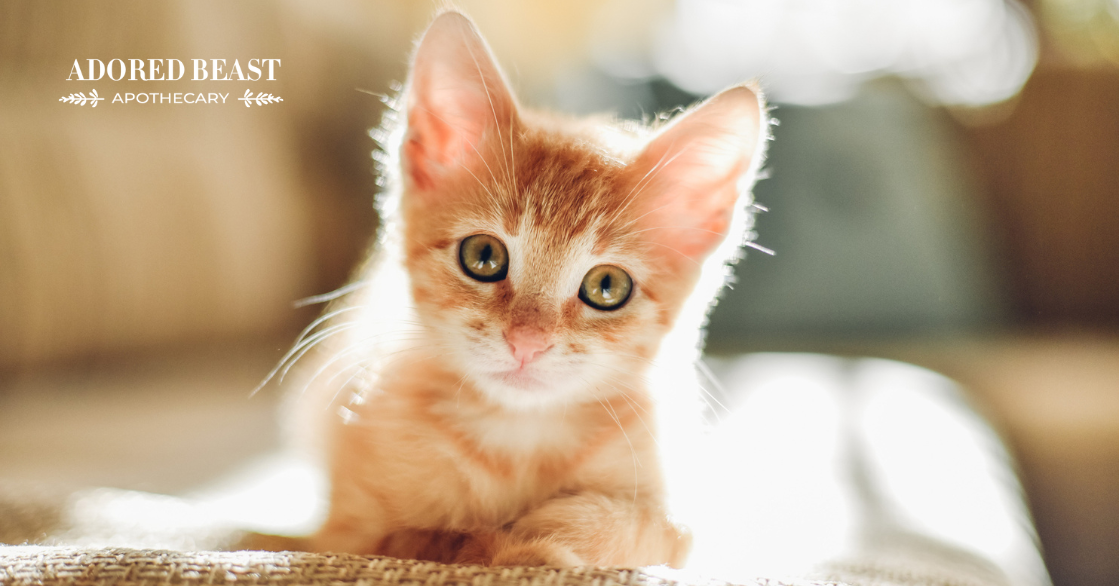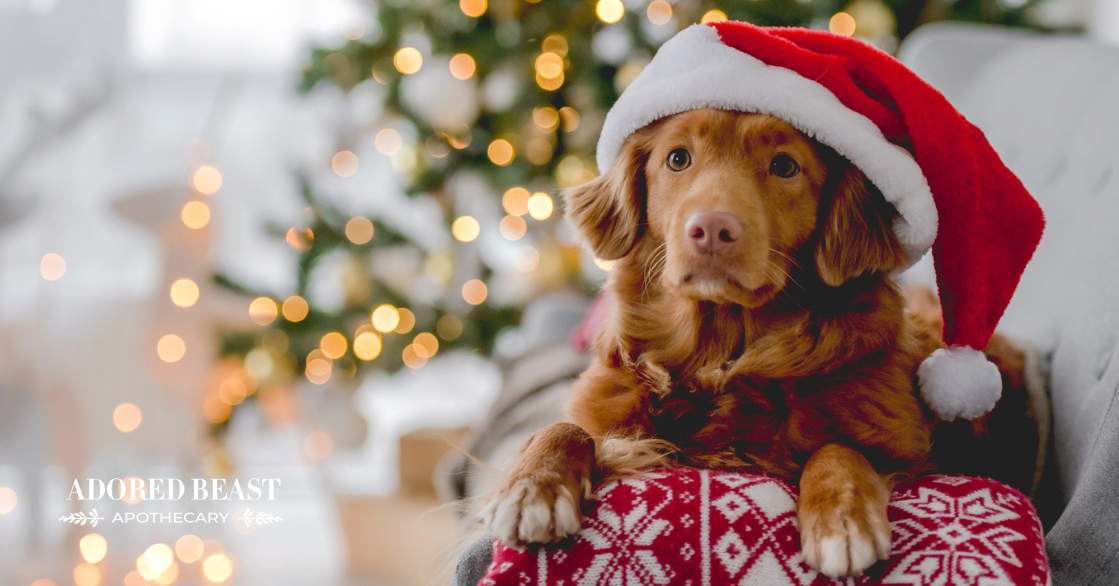We talk a lot about gut health here at Adored Beast. And that’s for a very good reason! The gut is the foundation of health, and for overall health, you want to pay close attention to the gut.
When it comes to supporting your dog or cat’s gut health, you’ve probably heard of prebiotics and probiotics—but there’s another important player in the mix: postbiotics. These powerful byproducts are gaining attention in the world of pet health for their impressive benefits, from supporting digestion to strengthening the immune system.
But what, exactly, are postbiotics for dogs and cats, and where can you find them?
What Are Postbiotics?
Postbiotics are the compounds produced when probiotics (the beneficial bacteria in the gut) break down prebiotics (the fibrous food that feeds those good bacteria). Think of them as the end result of the fermentation process happening in your pet’s digestive tract.
Unlike probiotics, which are live microorganisms, postbiotics are non-living byproducts. They include things like short-chain fatty acids (like butyrate), enzymes, peptides, cell wall fragments, and other metabolites. These substances are what actually do much of the work in the body – helping to regulate inflammation, improve gut barrier function, and communicate with the immune system.
Postbiotics are naturally produced in the large intestine when your pet’s beneficial gut bacteria ferment dietary fibers (prebiotics). A diverse and balanced gut microbiome is essential for this process. When the microbiome is healthy, the production of postbiotics can support a wide range of biological functions.
However, when your pet is under stress, has poor nutrition, or has recently taken antibiotics, this fermentation process may be disrupted, reducing the amount of postbiotics being created.
Prebiotics, Probiotics, and Postbiotics for Dogs and Cats: The Gut Health Trio
To better understand postbiotics for dogs and cats, it helps to see how all three elements work together:
- Prebiotics are non-digestible fibers found in certain foods (like chicory root, oats, and bananas) that feed good bacteria in the gut.
- Probiotics are the beneficial live bacteria themselves, found in supplements and fermented foods like kefir and yogurt.
- Postbiotics are what’s left behind after probiotics digest the prebiotics – they’re the result of a healthy and active gut microbiome.
In essence, prebiotics feed probiotics, which create postbiotics – and each one plays an essential role in your pet’s digestive health.
Benefits of Postbiotics for Dogs and Cats
Research on postbiotics is still emerging, but early studies in both humans and animals show a wide range of benefits, including:
- Supporting gut health by improving the intestinal barrier and reducing inflammation
- Boosting the immune system by promoting healthy immune responses
- Reducing harmful bacteria by helping maintain a balanced microbiome
- Soothing digestive issues like diarrhea, gas, or food sensitivities
- Enhancing nutrient absorption, allowing pets to get more from their food
Because postbiotics are not alive like probiotics, they’re also more stable, making them a great choice for pets who may not tolerate live cultures well or who have sensitive stomachs.
Are There Foods That Contain Postbiotics?
Postbiotics are more commonly found in fermented foods, although these aren’t always appropriate for every pet. Foods like:
- Fermented vegetables – go slow with these, and look for ones specifically made for pets (or make your own – here’s how)
- Kefir – can be safe for some pets as long as there are no additives
- Miso or kombucha – typically not recommended for pets due to salt, caffeine, or alcohol content
Instead of feeding fermented human foods, it’s often safer and more effective to focus on feeding high-quality prebiotic fibers and probiotics that will encourage the natural production of postbiotics in the gut.
How to Encourage Postbiotic Production in Pets
If you’re looking to support your pet’s gut health with postbiotics, here are some safe and effective options:
1. Use Probiotics Alongside Prebiotics
Using a synbiotic approach – combining probiotics with prebiotics – helps ensure your pet’s gut bacteria are active and supported. This combination naturally leads to the production of beneficial postbiotics in the digestive system. It’s one of the reasons all Adored Beast probiotics also contain prebiotics – we’re big proponents of that synbiotic approach!
2. Feed Prebiotic-Rich Foods
Encourage your pet’s gut bacteria to create more postbiotics by feeding foods that support a healthy microbiome. Pet-safe, prebiotic-rich options include:
- Pumpkin – a gentle fiber that also soothes the gut
- Chicory root – often found in natural pet foods or supplements
- Apples (no seeds or core) – contain pectin, a soluble fiber
- Blueberries – high in antioxidants and gut-friendly fiber
- Dandelion greens – can be added in small, pet-safe amounts
3. Pet-Specific Postbiotic Supplements
Look for supplements labeled as “postbiotics” or “heat-killed probiotics” (also known as paraprobiotics). These contain non-living bacterial fragments and their byproducts. Always choose supplements made specifically for pets.
Postbiotics are the powerful, non-living byproducts of a healthy gut, and they play a critical role in your dog or cat’s overall health. While you can’t always feed postbiotics directly, you can support their production with the right prebiotics, probiotics, and supplements. Supporting your pet’s microbiome from all three angles – prebiotic, probiotic, and postbiotic – can lead to better digestion, a stronger immune system, and a happier, healthier life.

